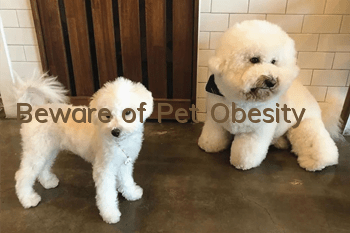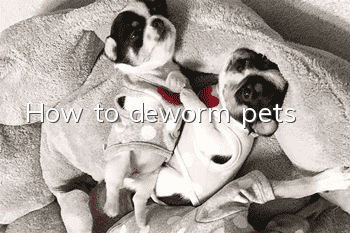Beware of Pet Obesity

Obesity is a nutritional disease caused by excessive fat in dogs and cats. The incidence of this pet disease is currently increasing. If it is not controlled as soon as possible, it is likely to become the number one killer threatening pet health in a few years.
According to international standards, dogs and cats are generally considered obese if they exceed their normal weight by 10% to 15%. It manifests as thickening of the subcutaneous fat layer, especially under the abdomen and sides of the body, plump and round body, swaying when walking, slow reaction, and unwillingness to move. Due to differences in breed, age, gender, nutrition and management conditions, it is often difficult for owners to identify whether their pets are overweight or obese. Therefore, in order to detect symptoms in time, experts have summarized some simple and intuitive judgment methods: For example, you You can touch the dog and cat's ribs with your hands. If there is no clear sense of layering or cannot be touched at all, it is an obvious sign of obesity. You can also stand behind the dog and press the thumbs of both hands on the midline of its back spine. Place your fingers on the ribs and slide your hands back and forth. If you feel the fat layer on the edge of the ribs and there is obvious fat accumulation in the groove, it means that your pet has suffered from obesity.
Obesity can cause many harms to pets. Such as hyperactivity or loss of appetite, intolerance to heat, easy fatigue, reduced flexibility, slowness or sleepiness, and easy loss of affinity with the owner; obese dogs and cats are prone to heart disease, diabetes, arthritis, spinal disc herniation, and fractures. and other diseases of the respiratory system, urinary system and endocrine system.
There are many causes of pet obesity, but they generally include the following aspects:
1. Obesity is related to breed, age and gender. Generally speaking, the probability of obesity in dogs and elderly cats over 10 years old is about 60%, and there are more female dogs and cats than male dogs and cats; among dogs, pugs, beagles, dachshunds, and Labradors Doret Reeves and short-haired cats are both breeds prone to obesity.
2. Genetic factors. Dogs and cats whose parents are obese are often more likely to have obese children.
3. Castration of male dogs and cats, castration of female dogs and cats, and certain diseases such as diabetes, hypothyroidism, hyperadrenocorticism, pituitary tumors, hypothalamic damage, etc. may also cause hyperphagia and lethargy in dogs and cats. Leading to gradual weight gain and obesity.
4. Obesity caused by lifestyle is also the main reason for pet obesity. For example, they are too doting on their pets in terms of appetite, giving them extremely high-calorie foods such as cream cakes and too delicate foods, and are not restrained in time and food intake; they have very little daily activity, and they have not developed good habits of walking dogs and playing with cats. Habits make pets in a state of gluttony, sleepiness, warmth and fear of cold for a long time.
To prevent and treat pet obesity, comprehensive measures must be taken to achieve the dual goals of weight loss and health care. First of all, we must strengthen feeding and management and correct unreasonable lifestyles. In terms of appetite, the diet should be changed and feed more low-fat and high-fiber foods. At the same time, feeding should be done regularly and quantitatively. Use the method of multiple small amounts and divide the daily food intake into 3-4 times.Do not feed other snacks at ordinary times; for overweight dogs and cats, the food intake should be reduced. Dogs should only be fed 60% of their normal food intake, and cats should only be fed 65% of their normal food intake. Secondly, increase the amount of exercise, accelerate calorie consumption, and reduce fat synthesis. In addition, it is necessary to strengthen the prevention and treatment of endocrine system diseases that may cause pet obesity. In particular, we must guard against diseases such as hypothyroidism, hyperadrenocorticism, diabetes, and pancreatitis.
- Tips for raising a Portuguese Water Dog
- How to train Chinese Shar-Pei
- Can dogs eat prune meat?
- Why hasn’t my dog pooped in a few days?
- Can pregnant women keep pets? How to avoid Toxoplasma gondii infection during pregnancy?
- Is the dog’s vision good? What does the world look like through the dog’s eyes?
- How many days will it take for a puppy to recover from a cold?
- Why does my dog keep coughing?
- Are American Akita dogs easy to raise? How to choose correctly?
- What to do about dog eczema



